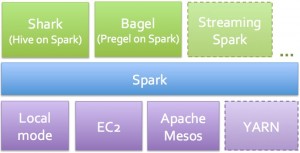Spark Breaks Previous Large-Scale Sort Record by Reynold Xin.
From the post:
Apache Spark has seen phenomenal adoption, being widely slated as the successor to Hadoop MapReduce, and being deployed in clusters from a handful to thousands of nodes. While it was clear to everybody that Spark is more efficient than MapReduce for data that fits in memory, we heard that some organizations were having trouble pushing it to large scale datasets that could not fit in memory. Therefore, since the inception of Databricks, we have devoted much effort, together with the Spark community, to improve the stability, scalability, and performance of Spark. Spark works well for gigabytes or terabytes of data, and it should also work well for petabytes.
To evaluate these improvements, we decided to participate in the Sort Benchmark. With help from Amazon Web Services, we participated in the Daytona Gray category, an industry benchmark on how fast a system can sort 100 TB of data (1 trillion records). The previous world record was 72 minutes, set by Yahoo using a Hadoop MapReduce cluster of 2100 nodes. Using Spark on 206 EC2 nodes, we completed the benchmark in 23 minutes. This means that Spark sorted the same data 3X faster using 10X fewer machines. All the sorting took place on disk (HDFS), without using Spark’s in-memory cache.
Additionally, while no official petabyte (PB) sort competition exists, we pushed Spark further to also sort 1 PB of data (10 trillion records) on 190 machines in under 4 hours. This PB time beats previously reported results based on Hadoop MapReduce (16 hours on 3800 machines). To the best of our knowledge, this is the first petabyte-scale sort ever done in a public cloud.
…
Bottom line: Sorted 100 TB of data in 23 minutes, beat old record of 72 minutes, on fewer machines.
Read Reynold’s post and then get thee to Apache Spark!
I first saw this in a tweet by paco nathan.

